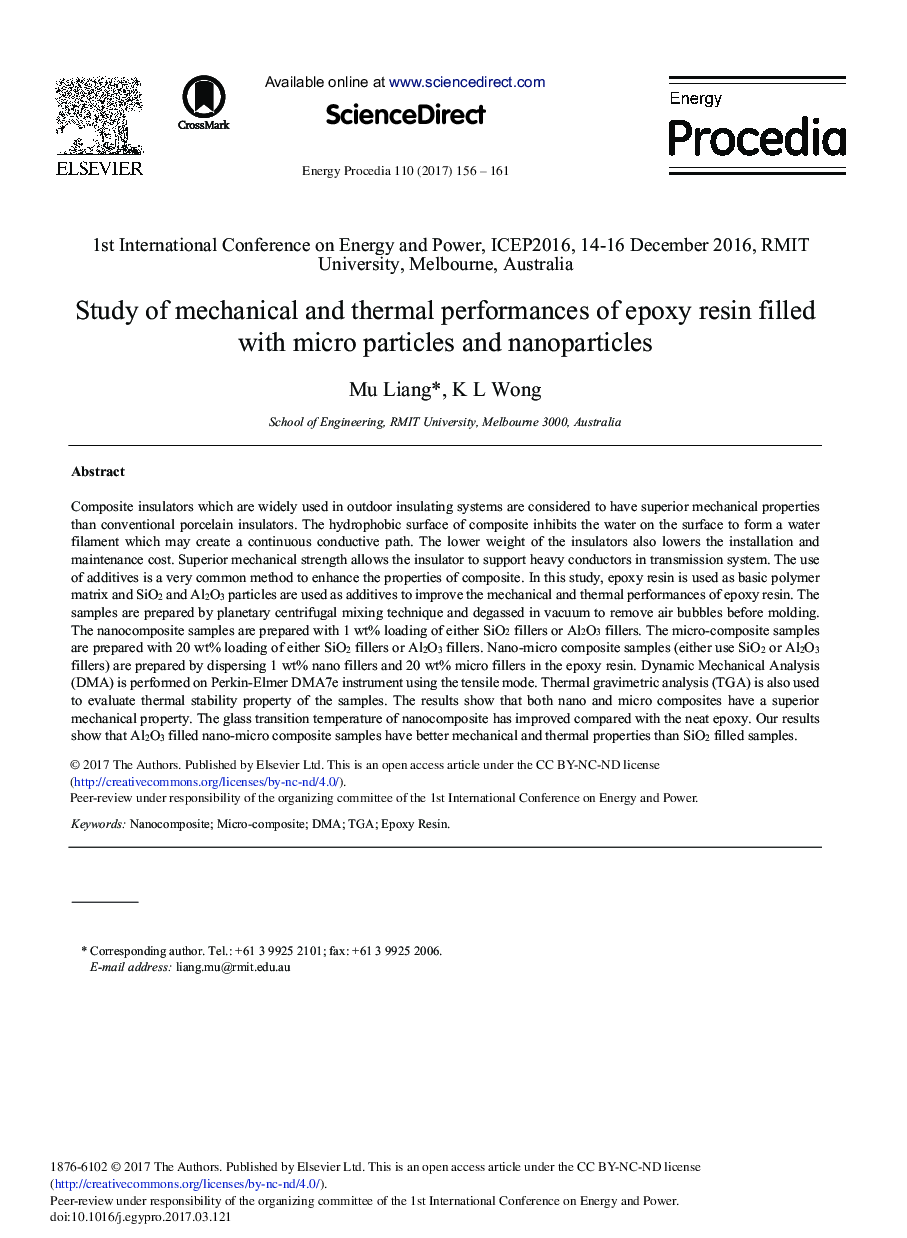| Article ID | Journal | Published Year | Pages | File Type |
|---|---|---|---|---|
| 5445720 | Energy Procedia | 2017 | 6 Pages |
Abstract
Composite insulators which are widely used in outdoor insulating systems are considered to have superior mechanical properties than conventional porcelain insulators. The hydrophobic surface of composite inhibits the water on the surface to form a water filament which may create a continuous conductive path. The lower weight of the insulators also lowers the installation and maintenance cost. Superior mechanical strength allows the insulator to support heavy conductors in transmission system. The use of additives is a very common method to enhance the properties of composite. In this study, epoxy resin is used as basic polymer matrix and SiO2 and Al2O3 particles are used as additives to improve the mechanical and thermal performances of epoxy resin. The samples are prepared by planetary centrifugal mixing technique and degassed in vacuum to remove air bubbles before molding. The nanocomposite samples are prepared with 1 wt% loading of either SiO2 fillers or Al2O3 fillers. The micro-composite samples are prepared with 20 wt% loading of either SiO2 fillers or Al2O3 fillers. Nano-micro composite samples (either use SiO2 or Al2O3 fillers) are prepared by dispersing 1 wt% nano fillers and 20 wt% micro fillers in the epoxy resin. Dynamic Mechanical Analysis (DMA) is performed on Perkin-Elmer DMA7e instrument using the tensile mode. Thermal gravimetric analysis (TGA) is also used to evaluate thermal stability property of the samples. The results show that both nano and micro composites have a superior mechanical property. The glass transition temperature of nanocomposite has improved compared with the neat epoxy. Our results show that Al2O3 filled nano-micro composite samples have better mechanical and thermal properties than SiO2 filled samples.
Related Topics
Physical Sciences and Engineering
Energy
Energy (General)
Authors
Mu Liang, K.L. Wong,
